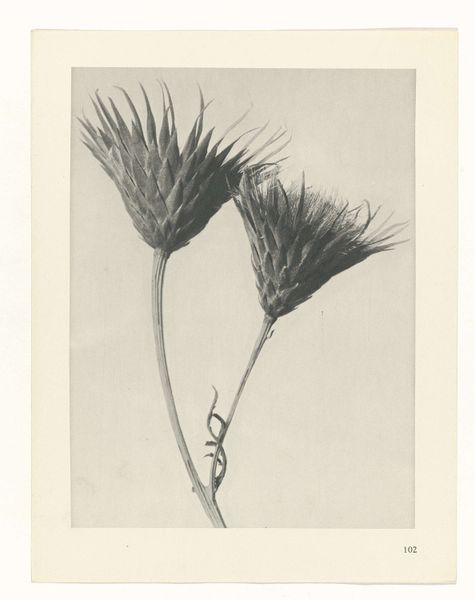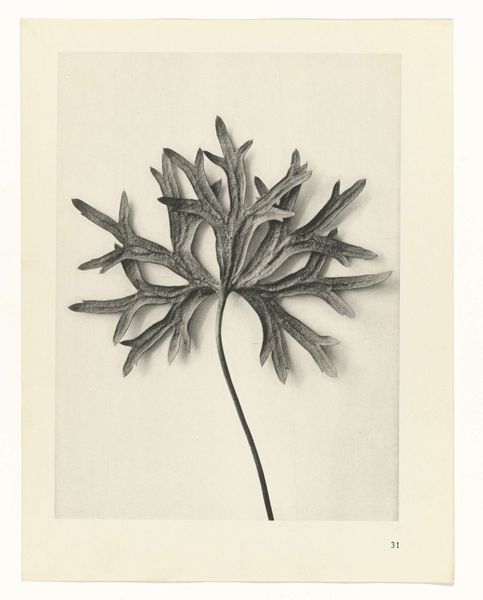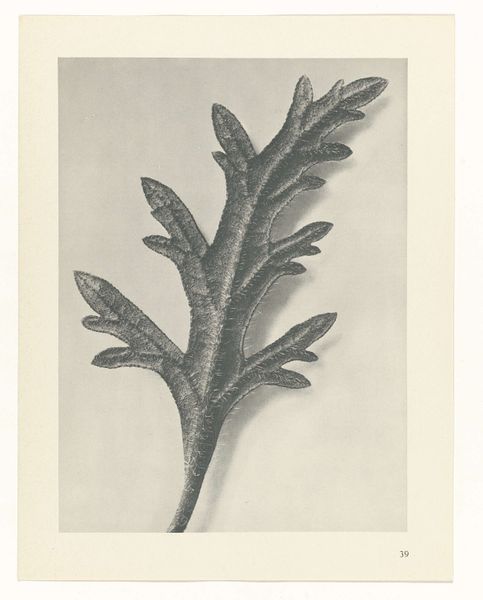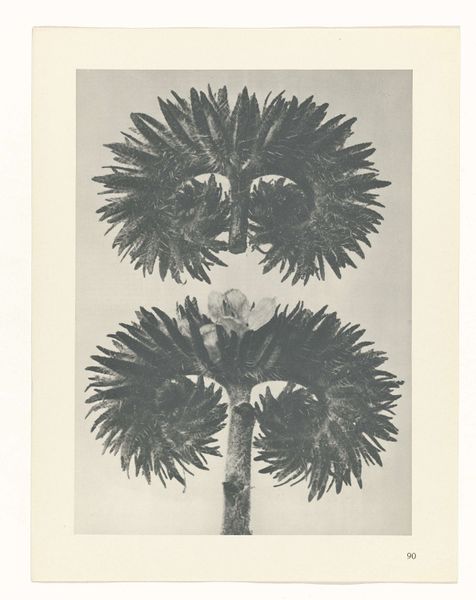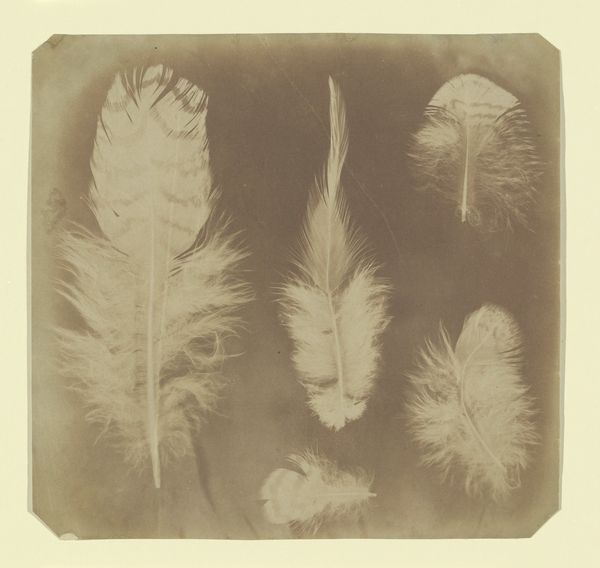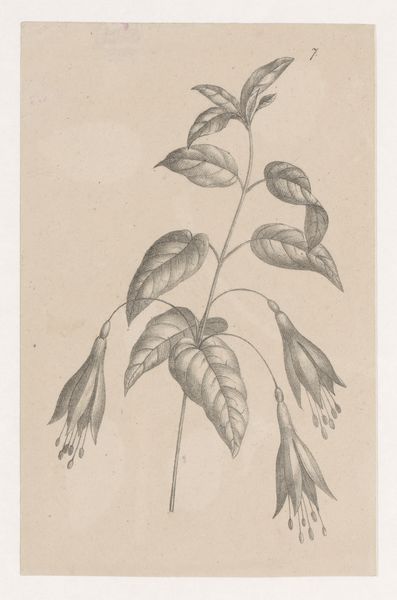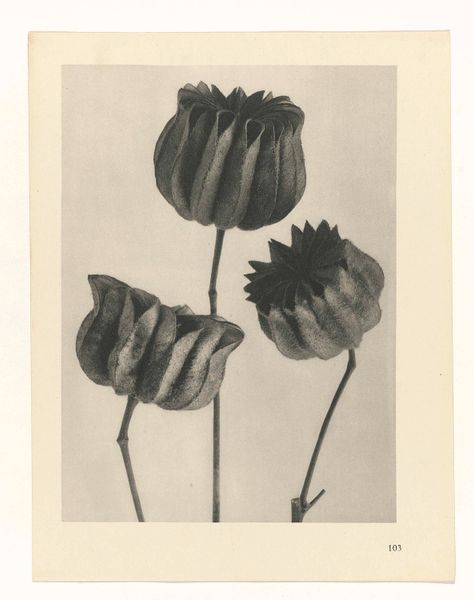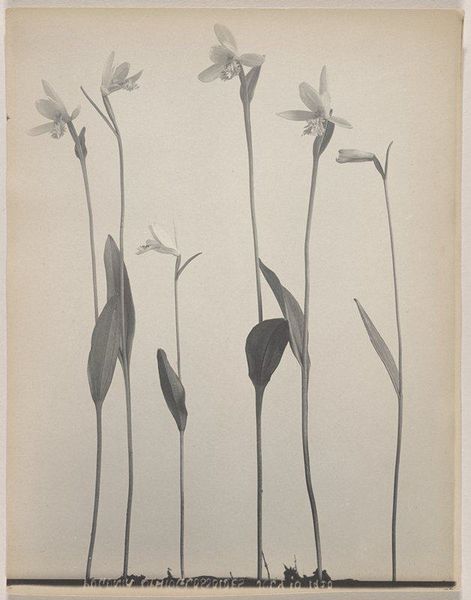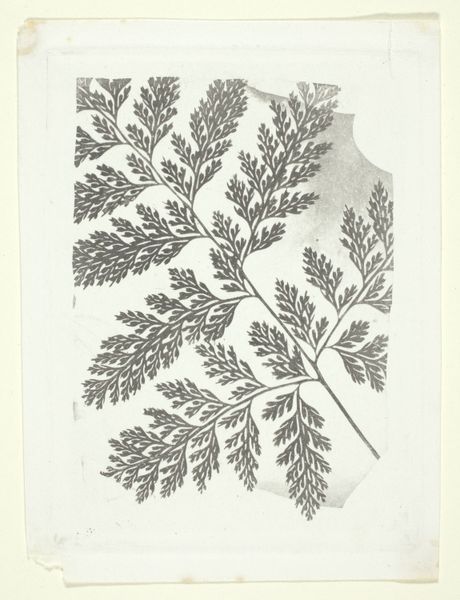
print, photography
#
still-life-photography
#
new-objectivity
# print
#
german-expressionism
#
photography
#
modernism
Dimensions: height 312 mm, width 242 mm
Copyright: Rijks Museum: Open Domain
Curator: This print, entitled "Plantstudie," comes to us from Karl Blossfeldt, dating back to 1928. What strikes you initially about this photograph, Editor? Editor: They look rather…tentacled. Alien, almost. It’s interesting how a simple plant form can feel so unsettling when presented with this level of stark detail and in this limited color palette. Curator: Indeed. Blossfeldt embraced photography, specifically photomicrography, as a means of documenting and archiving plant forms. Consider this image as one in a vast collection that reveals botanical structures often unseen by the naked eye. Think of the industrial application! He wasn't so much interested in artistic expression in a romantic sense as in revealing structure and function, almost cataloging the plant world to feed into design and architecture. Editor: You're right, there's an element of precision and detachment that aligns with the New Objectivity movement, the "Neue Sachlichkeit" aesthetic, particularly popular in Germany during that time. Still, I can't help but see how those swirling fronds echo classical motifs – like stylized acanthus leaves. The image hints at something deeply embedded in the visual vocabulary. Curator: Precisely. And what’s also worth mentioning is the physical method he employed. Blossfeldt actually crafted his own camera equipment, adapting it to achieve extreme magnification, all while using techniques readily accessible to his students. His equipment was comparatively rudimentary. He elevated the everyday materials into something extraordinary, democratizing the process. Editor: That’s remarkable. It speaks to how artistic vision can transcend technical limitations. To me, the curled tips of the fronds, presented like this, remind me of the eternal return—a symbol of unending cycles, even death and rebirth, playing out in these plant forms. Curator: Fascinating to consider alongside Blossfeldt's own approach. This convergence of functional cataloging with such potent symbolism complicates the work in compelling ways. Editor: Agreed, a fruitful synthesis indeed. It seems both the scientific lens and our symbolic interpretations meet, revealing multiple facets of what a plant image can evoke. Curator: Ultimately, what appeared as functional art reveals its own unique perspective. Editor: Yes. Even simple natural elements carry complex resonances when mediated by a careful eye and, of course, the artful utilization of craft.
Comments
No comments
Be the first to comment and join the conversation on the ultimate creative platform.
